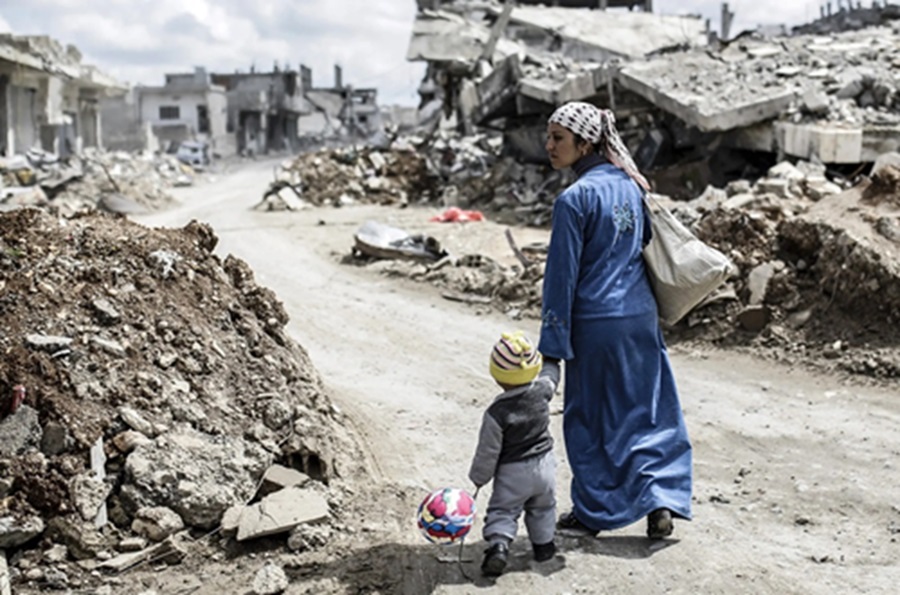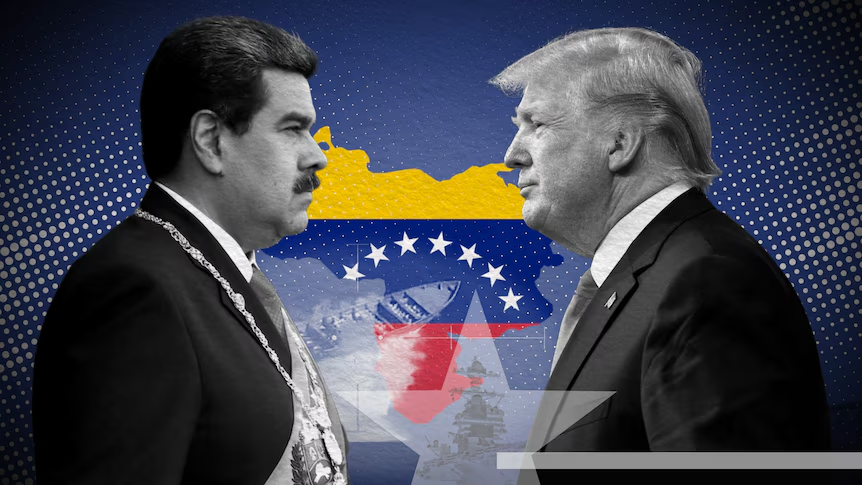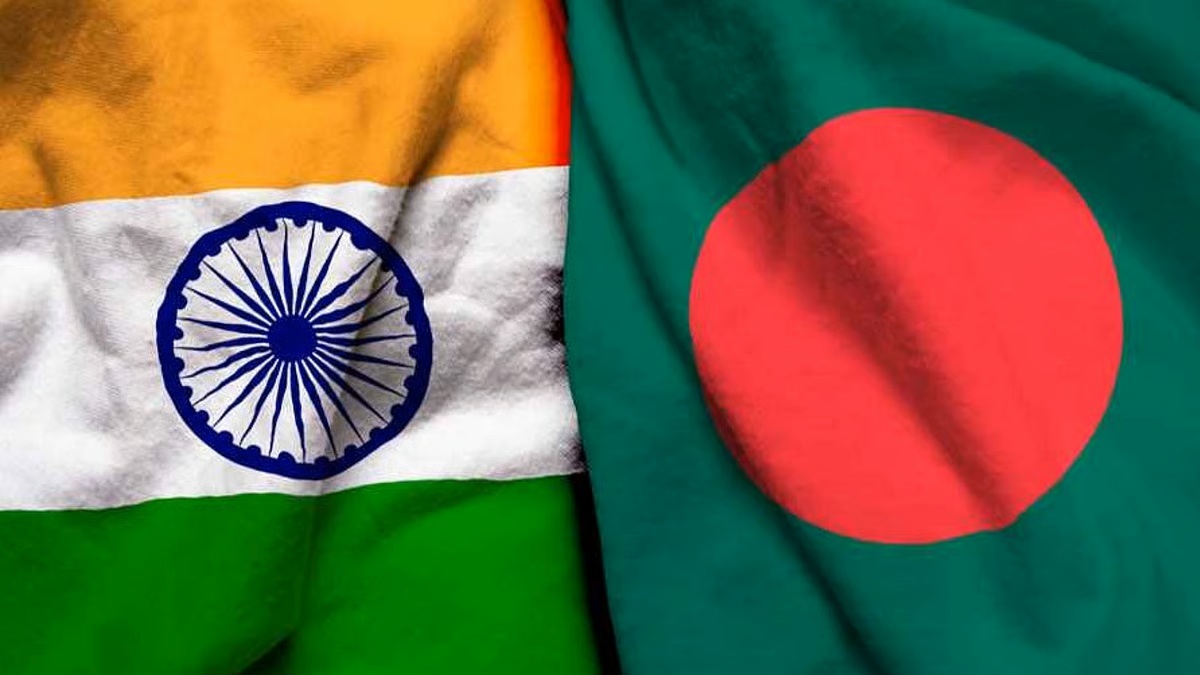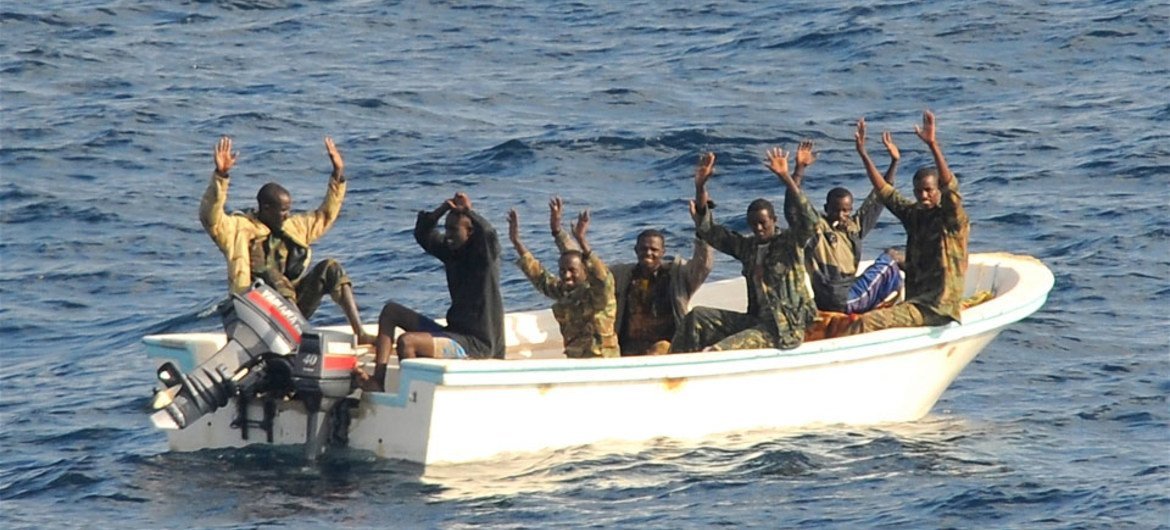The 2011 outbreak of the Syrian Civil War has had a significant and lasting impact on West Asia’s geopolitical dynamics. The paper looks at how the war has changed the power dynamics, alliances, and disputes in the region. It looks at how major regional and international players such as Saudi Arabia, Iran, Turkey, Russia, and the US have negotiated the conflict’s complicated terrain and altered the balance of power in the area. The broader ramifications for sectarian tensions, regional stability, and the future of West Asian geopolitics are also taken into consideration in the research.
Introduction
The Syrian Civil War, beginning in 2011, fundamentally altered the geopolitical environment in West Asia. Protests against the Assad regime that started peacefully turned into a complex struggle involving local, regional, and global players. In addition to wreaking havoc on Syria, the war has changed the balance of power significantly throughout West Asia, causing alliance changes, regional power struggles, and wider geopolitical ramifications over the years.
This paper delves into these intricate changes. The main subject of the examination will be how the involvement of various actors has affected the power dynamics in the region.
The paper will also look at the important changes in alliances brought about by the conflict. Lastly, the war’s wider geopolitical ramifications will be discussed, including how it may affect world power dynamics, the refugee crisis, and how the international community handles humanitarian relief and conflict resolution.
Redefining the political and strategic landscape of West Asia and beyond, the Syrian Civil War is remembered as a historic event in the past decade.
Research Questions:
- What are the main causes and origins of the Syrian Civil War?
- Who are the actors involved in the Syrian Civil War?
- What are the significant turning points that have shaped the course of the Syrian Civil War?
- How has the Syrian Civil War affected the regional power dynamics in West Asia?
- How have the alliances and rivalries among regional and international actors evolved?
- What are the broader implications of the Syrian Civil War?
Methodology
Employing a qualitative methodology, this study examines secondary sources such as books, academic journals, and news reports. It looks at pivotal points in the Syrian Civil War as well as the tactics and functions of important regional and global actors.
Background of the Syrian Civil War
A combination of political, economic, and social grievances led to the outbreak of the Syrian Civil War in March 2011. Syrians, emboldened by the Arab Spring, demonstrated against political persecution, economic suffering, and corruption. These protests were brutally suppressed by the Assad regime. To topple the regime, armed opposition groups emerged, sparking the start of a prolonged civil war (Syria: The Story of the Conflict, 2016).
- Authoritarian Rule: Syria was under the authoritarian rule of the Assad family for decades. The regime was characterized by political repression, lack of freedoms, and human rights abuses.
- Economic Hardships: Syria had significant unemployment, corruption, and economic disparity before the war. Droughts, that occurred between 2006 and 2011 made these problems worse by displacing rural communities and escalating urban poverty.
- Arab Spring Influence: In March 2011, Syrian demonstrators, emboldened by the Arab Spring, called for further political reform and liberties. Tensions rose and there was widespread unrest as a result of the Assad regime’s brutal suppression of nonviolent protesters.
Current Status
The Assad administration, backed by Russia and Iran, holds control over the majority of the country, with Kurdish forces and rebels backed by Turkey controlling the country’s north and northeast. With millions of people displaced and facing severe shortages made worse by unstable economic conditions and international sanctions, the nation is still severely damaged by the civil conflict (Syria, 2024).
Relevance of this Study
Understanding the geopolitical ramifications of the Syrian Civil War is vital, given its influence on global security, regional stability, and international power relations. Analyzing it helps manage refugee flows, comprehend the responsibilities of major powers, and bring stability.
Literature Review
Origins and Drivers of the Conflict
The start of the Syrian conflict was caused by both outside interference and domestic unrest. Following the 2011 Arab Spring demonstrations against the Assad regime, the conflict intensified into a civil war due to the regime’s severe repression and underlying problems like economic disparity and sectarian conflicts (Phillips, 2016; Wimmen & Asseburg, 2012).
Regional and International Involvement
Due to significant regional and international involvement, the Syrian crisis has evolved to be more complicated. Iran has sponsored the Assad administration to retain power, Turkey has backed opposition factions against Kurdish forces, and Saudi Arabia has funded Sunni rebel groups to oppose Iranian influence (Nehme, 2021; Welle, 2018; Cengiz, 2021). Russia has impacted the crisis greatly by providing Assad with military advisers and airstrikes, while the US has supported moderate opposition forces and targeted ISIS internationally (Hale, 2019).
Impact on Regional Security and Stability
The geopolitical rivalries and proxy wars that resulted from the Syrian Civil War have seriously undermined security and stability in the area (Şahin & sen, 2020). This involvement has strained socioeconomic resources and exacerbated the refugee crisis in addition to increasing destruction inside Syria and in neighbouring countries (Podraza, 2018). The management and resolution of conflicts on a global scale are made more difficult by ongoing arguments in the humanitarian sphere (Ogunnowo & Chidozie, 2020).
Future Scenarios and Geopolitical Projections
Iran is committed to influencing regional dynamics and supporting allies like Hezbollah, as seen by its ongoing military engagement in Syria (Entessar, 2024; Aljabary, 2023). This interaction is a component of a larger geopolitical rivalry, most notably between Saudi Arabia and Iran, both of which are pursuing different policies that have an impact on Syria’s future and regional stability (Cengiz, 2021; Habets, 2016). Despite security obstacles, the conflict’s humanitarian situation requires continuous international assistance (Ullah et al., 2022; Khan, 2023). As this is going on, the US and Russia compete for influence in the Syrian Civil War, which is a crucial arena that will shape Middle Eastern geopolitics in the future (Mamchii, 2023; Yolcu, 2016).
Key Actors and Their Strategies
The Syrian Civil War has altered the geopolitical landscape of West Asia by involving a wide spectrum of local, regional, and international actors.
Domestic Actors
The Assad Regime
Since 2000, Syria has been governed by the Assad regime, which is marked by a strong military and centralized government. The regime, which receives political and military assistance from its ties with Russia and Iran, maintains control through the use of militias, security forces, and Mukhabarat intelligence services. The regime’s tactics, which began as a counterinsurgency plan in response to the Arab Spring demonstrations, eventually turned into a civil war including opposition organizations. This resulted in severe humanitarian suffering and involved employing chemical weapons, aerial bombardment, and besieging rebel-held districts (Holliday, 2013). In “The Battle for Syria: International Rivalry in the New Middle East,” Christopher Phillips examines how the regime has maintained its hold on power by using military force, sectarian tactics, and propaganda (Phillips, 2016).
The Opposition Groups
Their goal has been to battle both the Syrian government forces and other opposition organizations to establish authority and governance, particularly in the province of Idlib.
The Kurdish Forces
In the Syrian civil war, particularly in the northeast of the nation, the People’s Protection Units and Women’s Protection Units, which are predominantly represented by the Kurdish forces, have played a crucial role. They started off protecting Kurdish areas from Assad’s forces, but with the support of the US-led coalition, they soon became significant allies in the fight against ISIS.
Regional Actors
Turkey
Turkey’s security concerns and strategic goals are complex and influenced by several important elements. Border Security is one of the elements associated with its security concern, due to the wide and porous shared border, Syria and Turkey have high priorities when it comes to border security. Turkey’s security concerns are heightened by the Syrian crisis, specifically concerning Kurdish autonomy in northern Syria, as it may incite separatist feelings among the Kurdish population living within its borders. Turkey’s resources are under pressure due to the Syrian refugee crisis, which has also affected its foreign and internal policies(Al Jazeera, 2022).
Regional Influence is another reason for Turkey’s involvement. Turkey is interested in retaining its power in the larger Middle East region. Turkey’s strategic engagement was demonstrated by operations such as Euphrates Shield (2016–2017), which battled against ISIS and targeted Kurdish forces in northern Syria (European Parliament, 2020). Actions like Olive Branch (2018), which targeted the YPG in Afrin, and Peace Spring (2019), which established a “safe zone” for refugees and resisted Kurdish forces, highlight Turkey’s efforts to exercise influence in the region (European Parliament, 2020).
Some of the implications of Turkey’s involvement are discussed below:
- Fragmentation: The result of Turkey’s backing of opposition organizations is a disintegrated opposition.
- Difficult Relations with US and Kurdish Forces: Turkey’s relations with Kurdish forces and the US were strained by operations such as Olive Branch (2018) and Peace Spring (2019), which targeted territories under Kurdish control.
- Geopolitical Shifts: Turkey’s relations with Russia and Iran have developed over time, striking a balance between allies and disputes to provide Turkey leverage over Syria while fostering tensions and dependence.
Iran
Iran’s primary motivations for getting involved in the Syrian civil war are to uphold its dominance in the area, maintain its security and aid its strategic partner, the Assad regime. Iran’s strategic objectives, including preserving access to Mediterranean ports and logistical routes for assisting allies like Hezbollah, are also the driving forces for its involvement in Syria. Iran, for instance, makes greater use of the Syrian naval base Tartus to increase its maritime dominance in the Mediterranean (Institute for the Study of War, 2020). Based on these reasons, Iran has shown significant involvement in the Syrian civil war by assisting the Assad regime with substantial financial and military backing, including the deployment of IRGC forces and the organization of Shia militias. Hezbollah’s crucial role in the 2013 battle for Qusayr helped the town be recaptured from rebel forces, exemplifying Iran’s proxy policy (Institute for the Study of War, 2020). Iran has consistently supported Syria in international forums, defending Assad’s government against external pressures. (Mamchii, 2023). The implications of Iran’s involvement are discussed below, focusing on significant consequences:
- Sectarian divide: Iran’s support of the Assad regime, has increased sectarian strife in Syria and exacerbated hostilities between Sunni and Shia populations (Mamchii, 2023).
- Regional dynamics: The power balances in the area have changed dramatically as a result of Iran’s engagement in Syria, posing more security and diplomatic difficulties for Israel and the Arab states (Mamchii, 2023).
Saudi Arabia
Saudi Arabia’s intent to avert perceived dangers and its regional rivalry with Iran are the driving forces behind its engagement in Syria. Riyadh backs several rebel groups to undermine the Iranian-backed regime and lessen Iranian influence in the area. Saudi Arabia aims to stop extremist organizations like ISIS and al-Qaeda affiliates from becoming powerful by exerting influence over the conflict. A Sunni-led government in Syria that is in line with Riyadh’s political and ideological goals is another goal (Cengiz, 2021). To topple the Assad regime, Saudi Arabia has given significant financial and military backing to Sunni rebel groups operating in Syria. This support consists of funds, weaponry and training to conduct operations. It engages in diplomatic cooperation with Gulf nations and global partners to undermine the Assad regime. (Cengiz 2021).
Implications of Saudi’s involvement are mentioned below:
- Prolonged conflict: Due to Saudi Arabia’s ongoing financial and armament support of rebel organizations, neither side has been able to prevail with certainty, which has prolonged the conflict (Cengiz, 2021).
- Regional Sectarian Tensions: Similar to Iran, Saudi Arabia’s intervention has widened the gulf between Sunnis and Shias and heightened sectarian tensions. This has intensified proxy wars not only in Syria but also in adjacent nations like Lebanon and Iraq, where Sunni and Shia groups are now more deeply involved in the fight (Cengiz, 2021).
Israel
Israel’s motivation for getting involved in the Syrian civil war is to protect its borders from Hezbollah and Iran and to prevent them from becoming a threat. By protecting its territorial integrity and limiting Iranian influence in the area, it seeks to fight off potential incursions by Iranian forces and their Syrian proxies (Khan, 2023).
Israel perceives obvious threats to its national security from Iran’s military presence and assistance for Hezbollah in Syria. Israel seeks to impede Iranian activities and lessen their operational capacity in the vicinity of its borders through intelligence operations and targeted attacks (Khan, 2023). Targeting Iranian locations, arms convoys, and Hezbollah agents in Syria, Israel has carried out multiple airstrikes and intelligence operations (Khan, 2023). Israel’s actions in Syria have destabilized Iranian operations and heightened regional tensions. Some of the implications of its involvement are mentioned below:
- Increased Regional Tensions: Instability in the region has been exacerbated by Israel’s operations against Iran’s position in Syria, particularly alongside Hezbollah (Khan, 2023). This has increased the general animosity amongst the parties concerned and led to periodic disputes and threats of retaliation.
- Iranian operations have become disrupted: Iran’s aspirations to create a permanent military presence in Syria have been effectively thwarted by Israel’s ongoing military operations. This includes several strikes on Iranian military facilities and logistical centres that are essential to Hezbollah and Iran’s regional endeavours.
International Actors
USA
There are various strategic reasons why the US is involved in the Syrian civil war. First and foremost, the United States seeks to combat terrorism, concentrating on ISIS in particular to stop its growth and comeback. In addition, the United States aims to safeguard its regional allies, especially Israel, and advance stability in the Middle East by reducing Iranian influence in Syria and beyond (Hale, 2019). Another important concern is resisting the authoritarian leadership of the Assad regime and promoting democratic governance and human rights (Hale, 2019). The USA has actively provided military assistance to Syrian rebel forces and carried out airstrikes against ISIS. It has concurrently engaged in diplomatic efforts to facilitate peace negotiations and impose sanctions on the Assad regime (Hale, 2019). The main effects of US actions and strategies in Syria are further explained below:
- Prolonged Conflict: The conflict was prolonged by U.S. backing for Syrian opposition groups intended to facilitate democratic transition (Hale, 2019).
- Impact on Terrorism: ISIS is still a serious terrorist threat even if the coalition led by the USA was able to destroy its territorial hold. The constant difficulty in establishing long-lasting stability is shown by ISIS’s persistent presence (Hale, 2019).
Russia
Russia wants to keep access to Tartus, the sole Mediterranean port in Syria, where it has a naval station that is essential to its naval operations and regional influence. It also aims to oppose Western influence and stop the growth of radical beliefs that could cause instability in areas close to its borders, especially in the Caucasus (Cengiz, 2021). Assad regime’s forces have benefited greatly from Russian military assistance, including airstrikes and ground support, in their conflicts with ISIS and opposition organizations (Cengiz, 2021).
Since 2015, Russia has actively backed the Assad administration in Syria by launching several airstrikes and deploying ground forces. The military action, which has been coordinated with Iran, has been essential in keeping Assad’s regime in place. Apart from providing military assistance, Russia has also taken part in political settlement initiatives, including the Astana process with Iran and Turkey (Cengiz, 2021; Brookes, 2024). But this position has undermined ties with the West. Additionally, this conflict has allowed Russia to test new weapons, which could increase future sales of armaments (Brookes, 2024).
Some of the implications of Russia’s involvement are mentioned below:
- Strengthened Assad Regime: Given Russian support, Assad’s regime has been strengthened and has been able to recapture important territories and areas such as Aleppo in 2016.
- Influence on Relations with Other Countries: Tensed relations have resulted from Russia’s military actions in Syria, which have targeted opposition organizations and supported the Assad regime, drawing criticism from Western countries.
Regional Power Shifts
Geopolitical Changes
The Syrian civil war has had a profound impact on West Asian geopolitics, resulting in a major realignment of power dynamics between the various regional and international actors involved (Bardají, 2016).
- Iran’s Prominence: By equipping ally groups such as Hezbollah and providing backing to the Assad administration, Iran has expanded its influence in the region, establishing a vital route connecting Tehran and Beirut (Bardají, 2016). Tensions with Israel and Saudi Arabia have increased as a result of this growth since they view Iranian involvement as a serious threat (Khan, 2023).
- Russia’s Reassertion: By providing military assistance to the Assad regime, Russia has strengthened its diplomatic influence and guaranteed the survival of a vital partner, strengthening its role in regional security (Bardají, 2016). With the establishment of military bases in Tartus and Khmeimim, Russia’s involvement in Syria has solidified its status as a significant Middle Eastern force once again (Khan, 2023).
- Shift in Turkey’s Strategy: Turkey’s stance has evolved; it is now opposing Kurdish autonomy instead of standing with opposition parties against Assad. The objectives of military operations such as “Operation Olive Branch” and “Operation Euphrates Shield” are to secure Turkey’s border and restrict Kurdish dominance (Bardají, 2016). Turkey manages its connections with Western allies by striking a balance between security concerns and regional influence, even in the face of opposing interests in peace talks (Bardají, 2016).
- The Strategic Calculations of Saudi Arabia: Saudi Arabia wants to establish its influence and resist Iranian influence. To weaken the Assad regime and lessen Iran’s influence in the region, Riyadh backs opposition groups (Bardají, 2016). It is trying to reduce threats from Iran and extremist organizations by fortifying regional ties, particularly with Israel, as it reassesses its approach in Syria. This change is indicative of Saudi Arabia’s practical strategy for defending its interests in the face of a complicated regional environment (Bardají, 2016).
- Decline of US Influence: The US’s influence in the Middle East has diminished as a result of its inconsistent actions in the region. Due to the absence of an established strategy and the troop withdrawals, regional players now question American involvement, which has shifted the balance of power and given Russia and Iran greater influence (Khan, 2023).
- Sectarian Polarization: The Syrian civil war, which is sometimes presented as a Sunni-majority Saudi Arabia versus the Shia-aligned Assad regime supported by Iran, has deepened sectarian differences across West Asia. Instability and violence have increased as a result of this polarization (Cafiero, 2024).
Shift in Alliances
- Iran-Russian Cooperation: Iran and Russia have established a tactical collaboration due to the Syrian conflict, supporting Assad in opposition to Saudi and American influence (Khan, 2023). This collaboration has been essential to keeping Assad in power and impeding regional initiatives by the US and Saudi Arabia (Cafiero, 2024).
- GCC divisions: The Gulf Cooperation Council (GCC) is divided as a result of the Syrian crisis. It has been reported that Qatar backs many groups, including Islamist organizations, while Saudi Arabia and the United Arab Emirates back opposition organizations. The GCC is now increasingly divided, and tensions in the region have increased as a result of this policy difference (Khan, 2023; Cafiero, 2024).
- Turkey’s Realignment: Turkey’s role has evolved, moving from supporting opposition forces to resolving issues related to Kurdish autonomy (Khan, 2023). Turkey works more closely with Iran and Russia, even though they back the Assad regime. This practical approach is demonstrated by Turkey’s balancing of regional goals with its security needs in the Astana peace process (Cafiero, 2024).
Broader Implications
- Expansion of Non-State Actors: Hezbollah has grown to be a powerful force in the region, and Kurdish factions have acquired fighting competence and autonomy, which has complicated the conventional power relations centred around the state and affected regional security (Cafiero, 2024).
- Humanitarian Impact: Resources are strained by the millions of refugees residing in nearby nations like Jordan, Lebanon, and Turkey, which has serious political, social, and economic repercussions (Cafiero, 2024). With approximately 3.6 million refugees, Turkey and its surrounding nations confront enormous obstacles in providing shelter, and healthcare (UN Refugee Agency, 2023).
Conclusion
Profound geopolitical changes have resulted from the Syrian civil war’s substantial impact on power relations, alliances, and regional stability in West Asia. These developments highlight the region’s complicated geopolitical environment, with Saudi Arabia’s strategic recalibrations, Iran’s advancement, Russia’s resurgence, and changes in Turkey’s approach all playing significant roles. The region is still being shaped today by the interaction of political, military, and sectarian forces. In addition to affecting regional peace and security, the conflict has impacted international debates about major powers’ roles in the Middle East and beyond, intervention, and conflict resolution.
Disclaimer: The views and opinions expressed by the author do not necessarily reflect the views of the Government of India and Defence Research and Studies
Title image courtesy: Bloomberg

References:
- Rafizadeh, M. (2014). The Syrian Civil War: Four Concentric Forces of Tensions. https://digitalcommons.usf.edu/etd/5812/
- Wimmen, H., & Asseburg, M. (2012). Civil war in Syria: external actors and interests as drivers of conflict. 7. https://www.ssoar.info/ssoar/handle/document/39957
- Rehman, Aziz. (2015). SYRIAN CIVIL WAR & STRUGGLE FOR SURVIVAL OF ASSAD REGIME AND ITS IMPACTS ON WIDER MIDDLE EAST.
- Laskar, J. H., Hussain, A., & Ahmed, N. (2022). Strategy and ideology in the Syrian civil war: Geopolitical & psychological consequences. International Journal of Health Sciences, 6(S2), 11279–11287. https://doi.org/10.53730/ijhs.v6nS2.8029
- Kešeljević, A., & Spruk, R. (2023). Estimating the effects of Syrian civil war. Empirical Economics, 66(2), 671–703. https://doi.org/10.1007/s00181-023-02470-2
- Oyosoro, Felix. (2021). SYRIA IN A TORMENT: KEY ACTORS AND GEOPOLITICAL INTRIGUES. 10.31730/osf.io/ew9au.
- Şahin, Mehmet & Şen, Osman. (2020). Miscalculation in Proxy War: The United States and Russia in Syrian Civil War from the Neoclassical Realist Perspective. Gazi Akademik Bakış. 14. 243-260. 10.19060/gav.839015.
- The Syria Conflict and the Geopolitics of the Region. (n.d.). https://www.iemed.org/publication/the-syria-conflict-and-the-geopolitics-of-the-region/
- Karim, Sajid. (2016). Syrian Crisis: Geopolitics and Implications. 37. 107-132. 10.56888/BIISSj2016v37n2a1.
- Podraza, A. (2018). Geopolitical and Strategic Causes and Implications of the Syrian Civil War and the Refugee Crisis. https://repozytorium.kul.pl/bitstream/20.500.12153/1570/4/PODRAZA_Andrzej_Geopolitical%20and%20strategic%20causes%20and%20implications%20of%20the%20syrian%20civil%20war_Nacao%20e%20Defesa_.pdf
- Tan, K. H., & Perudin, A. (2019). The “Geopolitical” Factor in the Syrian Civil War: A Corpus-Based Thematic Analysis. Sage Open, 9(2). https://doi.org/10.1177/2158244019856729
- Ogunnowo, O. E., & Chidozie, F. (2020). International Law and Humanitarian Intervention in the Syrian Civil War: The Role of the United States. Sage Open, 10(2). https://doi.org/10.1177/2158244020919533
- Habets, I. (2016). Obstacles to a Syrian Peace: The Interference of Interests. European View, 15(1), 77-85. https://doi.org/10.1007/s12290-016-0397-3
- Phillips, C. (2022). The international system and the Syrian civil war. International Relations, 36(3), 358-381. https://doi.org/10.1177/00471178221097908
- PHILLIPS, C. (2016). The Battle for Syria: International Rivalry in the New Middle East. Yale University Press. https://doi.org/10.2307/j.ctv1k03s4j
- Institute for the Study of War. (2013). The Assad Regime: From Counterinsurgency to Civil War (Middle East Security Report No. 8). https://www.understandingwar.org/sites/default/files/TheAssadRegime-web.pdf
- Welle, D. (2018, September 23). Pro-Turkey Syrian rebels accept Idlib deal. dw.com. https://www.dw.com/en/idlib-buffer-zone-pro-turkey-syrian-rebels-refuse-to-disarm/a-4560746
- Sarwar, Bayad. (2021). An analysis of the roots of the conflict between Kurdish forces in Syria and Turkey. 1. 15-19. 10.23918/ejmss..
- Käser, Isabel. (2021). A Struggle within a Struggle: A History of the Kurdistan Women’s Freedom Movement, 1978–2019. 10.1017/9781108623711.037.
- Gunes, Cengiz. (2019). Developments in the Kurdish Issue in Syria and Turkey in 2017. European Yearbook of Minority Issues Online. 16. 211-229. 10.1163/22116117_01601010.
- Barkey, H. J. (2019). The Kurdish Awakening: Unity, Betrayal, and the Future of the Middle East. Foreign Affairs, 98(2), 107–122. https://www.jstor.org/stable/26798092
- Onis, Ziya. (2012). Turkey and the Arab Spring: Between Ethics and Self-Interest. Insight Turkey. 14. 10.2139/ssrn.2017639.
- HALE, W. (2019). Turkey, the U.S., Russia, and the Syrian Civil War. Insight Turkey, 21(4), 25–40. https://www.jstor.org/stable/2684277
- Why has the Syrian war lasted 12 years? (2023, May 2). BBC News. https://www.bbc.com/news/world-middle-east-35806229
- Turkey’s Relations with the Syrian Opposition. (n.d.). Carnegie Endowment for International Peace. https://carnegieendowment.org/research/2012/04/turkeys-relations-with-the-syrian-opposition?lang=en¢er=global
- Black, I. (2018, April 14). Turkey imposes sanctions on Syria. The Guardian. https://www.theguardian.com/world/2011/nov/30/turkey-imposes-sanctions-on-syria
- Uras, U. (2022, July 27). Rising anti-refugee sentiment leads to debate in Turkey. Al Jazeera. https://www.aljazeera.com/news/2022/7/27/rising-anti-refugee-sentiment-leads-debate-turkey
- Robinson, K. (2023, July 11). Turkey’s Growing Foreign Policy Ambitions. Council on Foreign Relations. https://www.cfr.org/backgrounder/turkeys-growing-foreign-policy-ambitions
- Operation Euphrates Shield: Aims and Gains. (n.d.). Carnegie Europe. https://carnegieendowment.org/posts/2017/01/operation-euphrates-shield-aims-and-gains?lang=en¢er=europe
- Institute for the Study of War. (n.d.). Institute for the Study of War. https://www.understandingwar.org/report/iranian-strategy-syria
- Entessar, Nader. (2024). Iran’s Syria Policy and its Regional Dimensions. 10.3366/edinburgh/9781399518222.003.0005.
- Nehme, Esther. (2021). Iran’s Intervening Power in Syria’s Civil War: A Realist Perspective.
- Yolcu, Furkan. (2016). Iran’s Involvement with Syrian Civil War: Background, Reasons and Alternatives. BİLGİ Sosyal Bilimler Dergisi.
- Aljabary, Zuhour. (2023). Iran’s Geopolitical Role in Syria. SSRN Electronic Journal. 10.2139/ssrn.4326994.
- Mamchii, O. (2023, December 30). Why is Iran Involved in Syria: A Look at Multifaceted Reasons. Best Diplomats | Diplomatic Conferences | New York. https://bestdiplomats.org/why-is-iran-involved-in-syria/
- Ullah, Muhammad & Khan, Amna & Syed, Areeja. (2022). Humanitarian Crisis in Syria and International Response. Global International Relations Review. V. 21-32. 10.31703/girr.2022(V-IV).03.
- Khan, Z. (2023, October 10). What are the strategic challenges posed by the impact of the Syrian Civil War on the Middle East?Modern Diplomacy. https://moderndiplomacy.eu/2023/10/11/what-are-the-strategic-challenges-posed-by-the-impact-of-the-syrian-civil-war-on-the-middle-east/
- Cengiz, S. (2021). Saudi Arabia and Russia in the Syrian Crisis: Divergent Policies, Similar Concerns. In The Syrian Crisis (pp. 105-121). ResearchGate. https://www.researchgate.net/publication/343795536_Saudi_Arabia_and_Russia_in_the_Syrian_Crisis_Divergent_Policies_Similar_Concerns
- Lüdtke, L. (2024, February 28). Russia’s Middle East resurgence: Here to stay? – GIS Reports. GIS Reports. https://www.gisreportsonline.com/r/russias-middle-east-resurgence-here-to-stay/
- A timeline of the US involvement in Syria’s conflict | AP News. (2019, January 11). AP News. https://apnews.com/article/96701a254c5a448cb253f14ab697419b
- Bardají, R. L. (2016). Religion, Power and Chaos in the Middle East. European View, 15(1), 87-95. https://doi.org/10.1007/s12290-016-0391-9
- Cafiero, G. (n.d.). Key political trends to watch in the Middle East in 2024. The New Arab. https://www.newarab.com/analysis/key-political-trends-watch-middle-east-2024
- The Fallout of War: The Regional Consequences of the Conflict in Syria. (2021). In World Bank. https://www.worldbank.org/en/region/mena/publication/fallout-of-war-in-syria
- Syria: The story of the conflict. (2016b, March 11). BBC News. https://www.bbc.com/news/world-middle-east-26116868
- Syria. (2024, January 11). Human Rights Watch. https://www.hrw.org/world-report/2024/country-chapters/syria








